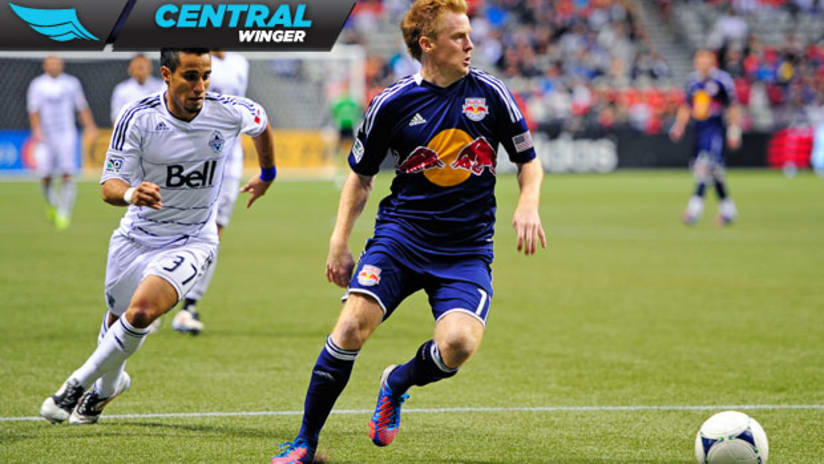Weeks ago, we explored the argument that not all shots are made equal. In retrospect, this makes a lot of intuitive sense – a strike from the center of the six-yard box is a lot more likely to result in a goal compared to a header from outside the penalty area. Luckily, these events have happened enough times that we are able to quantify just how much danger each of these opportunities pose.
This article aims to do the same thing, but instead with passes. Just like shots, passes are more or less likely to be completed based on a handful of variables. Since it's less likely to complete a pass in the attacking half of the field than the defensive half of the field, proximity to goal is an obvious factor. In fact, 88 percent of league-wide passes have been completed successfully in the defensive half, while passes in the attacking half have been completed 66 percent of the time.
READ: Central Winger archive
Another variable is distance – the longer a pass is, the less likely it is to succeed. Categorizing a pass as a "backward" pass plays a significant role in success, since backward passes have a 90 percent completion rate this season. Conversely, forward passes have had a lessor completion rate hovering around 67 percent. Passing angle is a less obvious variable – with passing percentages degrading as the angle toward goal gets sharper.
By sticking all of these variables (and a few other helpers) into a logistic regression, we gain a fairly robust model for predicting the outcome of a pass based on these variables. By applying this model to all of the passes in the 2012 MLS season, we can control for players completing passes of different difficulty.
For example, if two players complete the same amount of passes in a single season – but one player completed significantly more difficult passes – it's likely that the passer completing the more difficult passes is more valuable to his team. Without this kind of predictive model, we are stuck counting passes as if they are all worth the same – and we know better than that.
Using this model, we are able to give each attempted pass in the MLS season a percentile chance of success. For example, one particular pass may have a 75 percent chance of success. If this pass is completed, we reward the player 25 points for moving the 75 percent chance of success to a 100 percent chance of success. However, if this pass is not completed successfully, we penalize the player 75 points for moving the 75 percent chance of success to a zero percent chance.
By applying this process to every pass and player in MLS this season, here are the league's best passers:
Name |
Weighted Passes |
WP/90 min |
Dax McCarty (NY) |
235.25 |
12.42 |
James Riley (CHV) |
232.28 |
13.66 |
Kyle Beckerman (RSL) |
229.63 |
12.32 |
Jeff Larentowicz (COL) |
218.99 |
12.41 |
Chris Wingert (RSL) |
191.82 |
10.53 |
Drew Moor (COL) |
179.31 |
9.44 |
Juninho (LA) |
169.72 |
10.25 |
Young-Pyo Lee (VAN) |
168.55 |
8.43 |
Osvaldo Alonso (SEA) |
167.94 |
10.50 |
Tony Beltran (RSL) |
154.76 |
8.23 |
Chance Myers (SKC) |
154.29 |
8.12 |
Javier Morales (RSL) |
154.15 |
12.67 |
Daniel Woolard (DC) |
153.77 |
8.64 |
Luis Zapata (COL) |
152.92 |
9.58 |
Jermaine Taylor (HOU) |
152.04 |
10.68 |
Like all statistical models, this isn't perfect. It doesn't control for a handful of different important variables such as defensive pressure – and even game situation. But, these seem like some pretty reasonable results.
READ: OPTA Spotlight archive
It's no surprise that Dax McCarty is leading the league, but James Riley is a pretty fascinating find. But that probably doesn't come as much of a surprise to the Chivas USA coaching staff – Riley has played every minute of every game this season.














